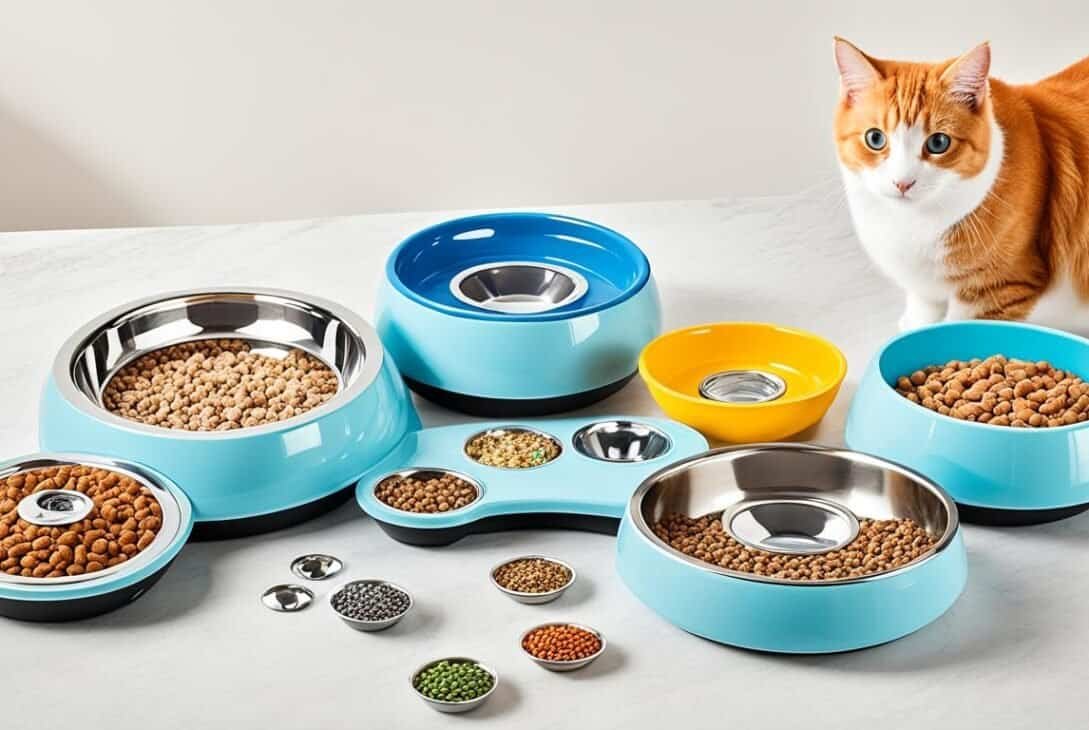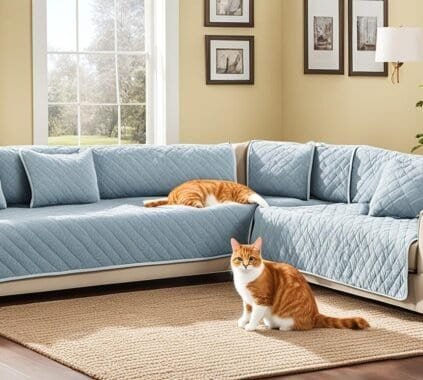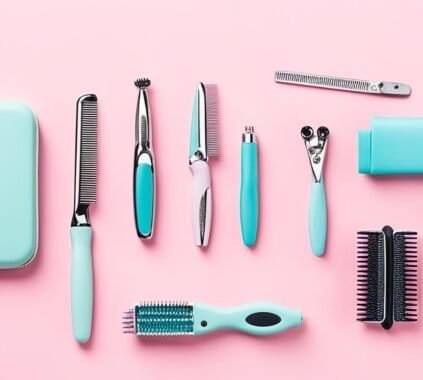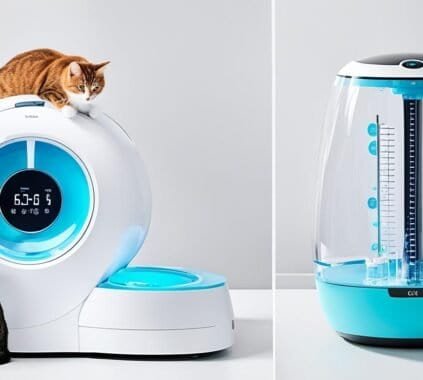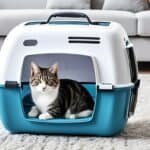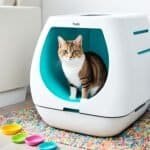When it comes to taking care of our beloved feline friends, providing them with the right feeding and watering supplies is crucial for their health and well-being. From cat bowls to water fountains, choosing the best options ensures that our cats are well-nourished and properly hydrated.
First and foremost, let’s talk about cat bowls. These come in various materials such as stainless steel, glass, ceramic, and plastic. Each material has its own pros and cons when it comes to durability, hygiene, and ease of cleaning. It’s important to consider these factors when selecting the best cat bowls for your furry companions.
Next, we have cat water bowls and fountains. Cats need access to fresh and clean water at all times, and providing them with convenient and continuous access is essential. Automatic water dispensers and gravity waterers are great options that ensure a steady supply of water for your cats, even when you’re away.
Maintaining hygiene is crucial when it comes to cat water fountains and bowls. Regular cleaning and disinfection are necessary to prevent bacteria buildup and ensure the health of your cats. Luckily, there are effective cleaning methods and products available to make this task easier.
So, what type of cat bowls should you use for food and water? Consider factors like material, size, and shape to find the best fit for your cats. Each type of bowl has its own advantages and disadvantages, so it’s important to weigh these factors carefully.
Choosing the right cat feeding and watering supplies is essential for the health and happiness of your furry companions. By providing them with the best materials, convenient access to water, and proper hygiene, you can ensure that they stay happy and healthy.
Key Takeaways:
- Choosing the right cat bowls ensures proper feeding and hydration for your cats.
- Different materials have their own pros and cons – consider factors like durability and hygiene.
- Automatic water dispensers and gravity waterers provide continuous access to fresh water.
- Regular cleaning and disinfection of cat water fountains and bowls are important for hygiene.
- Consider the material, size, and shape when choosing cat bowls for food and water.
Best Cat Water Bowls and Fountains
Ensuring that your cat has access to fresh and clean water is essential for their overall health and well-being. Cat water bowls and fountains provide convenient and continuous access to water, keeping your feline friend hydrated throughout the day.
Automatic water dispensers and gravity waterers offer additional benefits, making it easier for your cat to stay hydrated even when you’re not around. These devices help regulate the water supply, ensuring that it is always available and preventing it from becoming stagnant.
When choosing the best cat water bowl or fountain, consider the size and needs of your cat. Some cats may prefer shallow bowls, while others may enjoy drinking from a fountain. Additionally, factors such as ease of cleaning and durability should be taken into account.
Here are some top-rated cat water bowls and fountains that are highly recommended:
- Cat Water Bowl: A stylish and practical cat water bowl made from high-quality stainless steel, providing durability and preventing bacteria growth. The non-slip base keeps the bowl in place, reducing spills and mess.
- Automatic Water Dispenser: An automatic water dispenser with a built-in filter that ensures clean and fresh water is continuously available for your cat. The dispenser has a large capacity, reducing the frequency of refills.
- Cat Water Fountain: A cat water fountain with multiple flowing streams that attract cats and encourage them to drink more. The fountain has a replaceable carbon water filter, ensuring the water is clean and free from impurities.
- Gravity Waterer: A gravity waterer with a spill-resistant design, providing a constant supply of water for your cat. The waterer has a transparent tank, making it easy to monitor the water level and refill when necessary.
By choosing the right cat water bowl or fountain, you can ensure that your feline companion stays hydrated and healthy. Remember to clean and refill the water regularly to maintain freshness and prevent any waterborne diseases.
How to Clean and Disinfect Cat Water Fountains and Bowls
Regular cleaning and disinfecting of cat water fountains and bowls is crucial to maintain the health and well-being of your furry friend. A clean drinking source helps prevent the growth of harmful bacteria and ensures that your cat stays hydrated. Here are some tips and techniques for effective cleaning and disinfection:
- Select the right cleaning products: Choose a cat-safe cleaning solution that is specifically designed for water fountains and bowls. Avoid using harsh chemicals or soaps that could leave residue or harm your cat.
- Disassemble the fountain or bowl: Remove all parts, including the reservoir, pump, and any removable filters or attachments. Refer to the manufacturer’s instructions for guidance.
- Scrub and rinse: Use a soft brush, preferably a toothbrush, to scrub all the components thoroughly. Pay attention to any hard-to-reach areas where bacteria may accumulate. Rinse each part with clean water to remove any soap residue.
- Disinfect with cat-friendly solutions: To disinfect the components, you can use a mixture of water and white vinegar or a diluted bleach solution. Follow the manufacturer’s recommendations and rinse the parts thoroughly after disinfection.
- Dry and reassemble: Allow all the components to air dry completely before reassembling the fountain or bowl. Ensure that there is no moisture left, as it can encourage the growth of bacteria.
Remember to clean and disinfect your cat’s water fountain or bowl at least once a week, or more frequently if necessary. By following these guidelines, you can maintain a clean and safe water source for your beloved feline companion.
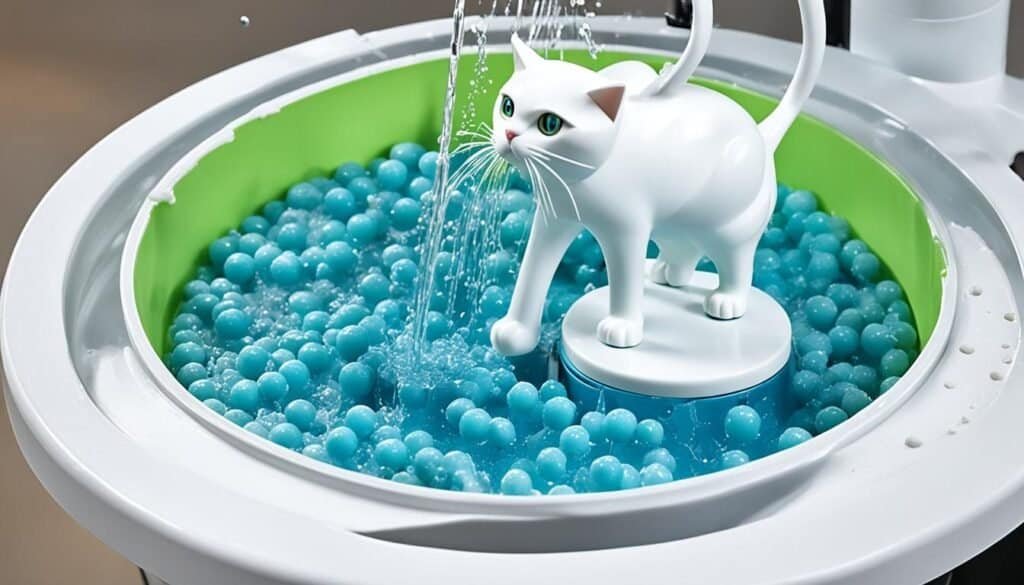
What Type of Cat Bowls You Should Use for Food and Water
Choosing the right type of cat bowls for your feline companion’s food and water is essential for their health and well-being. There are various factors to consider when selecting cat bowls, including the material, size, and shape. Each type of cat bowl has its own pros and cons, so it’s important to make an informed decision.
Materials for Cat Bowls
There are several materials commonly used for cat bowls, including stainless steel, glass, ceramic, and plastic. Stainless steel cat bowls are a popular choice due to their durability, ease of cleaning, and resistance to bacteria. Glass and ceramic cat bowls are also great options as they are non-porous, making them less likely to retain odors and stains. However, they can be fragile and may break if accidentally dropped. Plastic cat bowls are lightweight and inexpensive, but they can scratch easily, harboring bacteria.
Size and Shape
The size and shape of cat food bowls can also affect your cat’s eating experience. Cats prefer shallow bowls that allow their whiskers to remain free from touching the sides. Wide and shallow bowls are ideal for preventing discomfort during mealtime. Additionally, consider the size of your cat when selecting a bowl. Smaller cats may prefer smaller bowls, while larger cats may need larger bowls to comfortably eat their food.
Pros and Cons
Here is a summary of the pros and cons of each type of cat bowl:
- Stainless Steel Cat Bowls:
- Pros: Durable, easy to clean, resistant to bacteria.
- Cons: Can be noisy and may slide on smooth surfaces.
- Glass and Ceramic Cat Bowls:
- Pros: Non-porous, less likely to retain odors and stains.
- Cons: Fragile, may break if dropped.
- Plastic Cat Bowls:
- Pros: Lightweight, inexpensive.
- Cons: Easily scratched, can harbor bacteria.
When choosing cat bowls, consider your cat’s individual preferences and needs. Some cats may have specific requirements, especially if they have certain health conditions. It’s always a good idea to consult with your veterinarian for specific recommendations based on your cat’s unique needs.
For top-rated cat food and water bowls, check out our recommended list of high-quality and durable cat bowls that cater to different preferences and requirements.
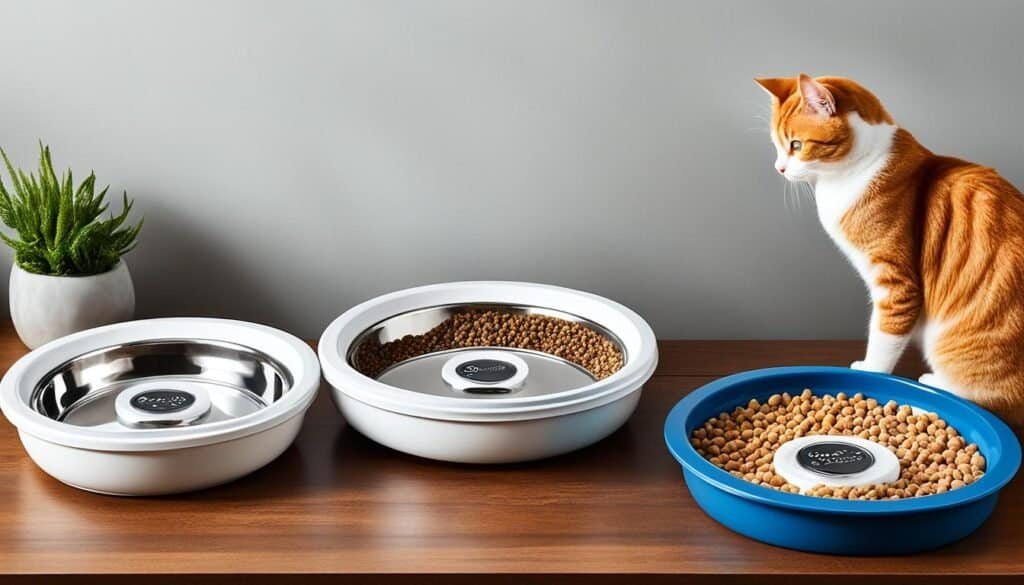
Conclusion
Providing essential cat feeding and watering supplies is vital for the health and well-being of your furry friend. Throughout this article, we have discussed various types of cat bowls, water fountains, and automatic feeders that can enhance your cat’s feeding and hydration experience.
Cat bowls come in different materials such as stainless steel, glass, ceramic, and plastic. Each material has its own advantages and disadvantages, so it’s important to choose the one that suits your cat’s needs and preferences. Additionally, considering the size and shape of the cat food bowls can optimize mealtime for your pet.
When it comes to cat water bowls, fountains and automatic water dispensers provide convenient and continuous access to fresh and clean water. These options ensure that your cat stays well-hydrated throughout the day, promoting optimal health. It’s essential to regularly clean and disinfect these water dispensing systems to prevent bacteria buildup and maintain hygiene.
In conclusion, selecting the right cat feeding and watering supplies is crucial. By choosing high-quality and durable products that suit your cat’s individual needs, you can ensure their comfort, health, and happiness. Providing them with the best tools for feeding and hydration will contribute to their overall well-being.
FAQ
What are the different types of cat bowls and their importance in feeding and watering cats?
How do I choose the best size and shape of cat food bowls for my cat?
What are the benefits of using automatic water dispensers and gravity waterers for cats?
How should I clean and disinfect cat water fountains and bowls?
What type of cat bowls should I use for food and water?
How often should I clean cat water fountains and bowls?
What are the best cat bowls for food and water?
Last modified: March 13, 2024

